ICELAND
Economy

Economy

Cities in ICELAND
| Reykjavik |
Economy
General
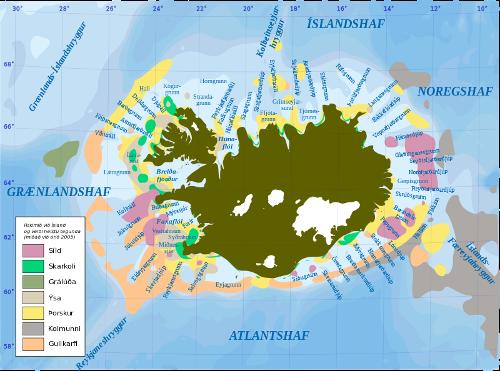 Icelandic fishing groundsPhoto: Akigka CC 3.0 Unported no changes made
Icelandic fishing groundsPhoto: Akigka CC 3.0 Unported no changes made
The Icelandic economy is largely dependent on fishing and the fish processing industry. This sector accounts for a large part of the exports. The expansion of the fishing area from 4 to 200 miles has often caused problems with foreign countries in the past. With England, this led to two real cod wars in the 1970s, even suspending diplomatic relations. However, the economy is very sensitive to changes in fish prices and the government is therefore trying to give the economy a broader base, for example by attracting foreign industrial companies. Great expectations are held for the development of the enormous hydropower potential. Although the country has been experiencing high inflation for quite a long time, the economy is growing steadily and unemployment is low.
Agriculture, animal husbandry and fishing
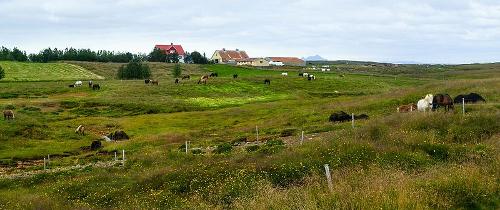 Farm IcelandPhoto: Maurae189 CC 4.0 International no changes made
Farm IcelandPhoto: Maurae189 CC 4.0 International no changes made
Due to the natural conditions and the geographic structure, only a small part of the surface is suitable for arable farming, where mainly potatoes, sugar beets and cabbage are harvested. There is an extensive glass culture around Reykjavik, fed by hot springs and producing flowers, tomatoes, grapes, cucumbers and various subtropical fruits. Livestock farming plays an important role and includes cattle farming (for milk production) and sheep farming for meat and wool. The country can provide for its own needs for meat and milk products. However, the government does promote afforestation on a large scale to prevent soil erosion. The fishery, which is operated by a state-of-the-art fleet, focuses mainly on cod and herring fishing and to a lesser extent on crab, lobster and shellfish. The cod is frozen, salted or dried and is mainly intended for export. Herring is mainly processed into fish meal and fish oil. In the mid-1980s, Iceland banned commercial whaling under pressure from international environmental organizations.
Industry and Energy supply
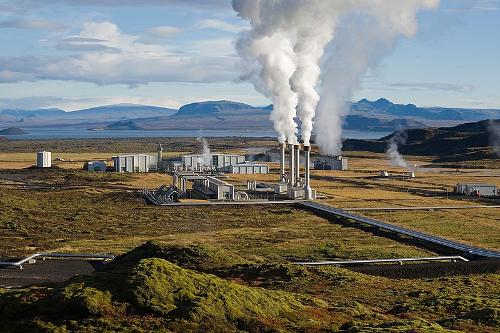 Nesjavellir Geothermal Power Plant in Þingvellir, IcelandPhoto:Gretar Ívarsson in the public domain
Nesjavellir Geothermal Power Plant in Þingvellir, IcelandPhoto:Gretar Ívarsson in the public domain
The fish processing industry, cold stores and fish canning factories form the most important group of the industrial sector. There is also a Swiss aluminum company, a fertilizer factory and a cement factory. The fishing industry has attracted many small industrial supply companies such as shipyards and manufacturers of marine supplies and equipment and a packaging industry. There is also some textile industry, while the manufacture of plastic is increasing strongly; the processing of wool and hides is also becoming increasingly important.
About 97% of energy in the form of electricity is supplied by hydropower. The power plants are operated by the National Power Company, a part state, part private company. Geothermal energy in the form of hot water and steam provides Reykjavík and its surroundings with hot water for domestic use and heating.
Trade
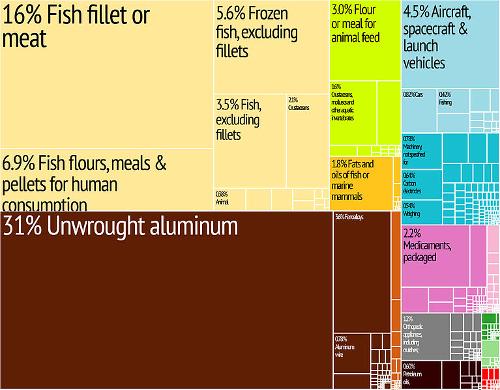 Export IcelandPhoto:R. Haussmann, Cesar Hidalgo,et.al CC 3.0 Unported no changes
Export IcelandPhoto:R. Haussmann, Cesar Hidalgo,et.al CC 3.0 Unported no changes
Fish and fish products, aluminum and fertilizer are exported. Main trading partners are: the Netherlands, Norway, England, the United States, Germany, and Japan. Imported are: machines and equipment, petroleum, means of transport, drinks and tobacco. Main partners are: Norway, the Netherlands, Great Britain, Germany, Denmark, Sweden and Norway.
Traffic
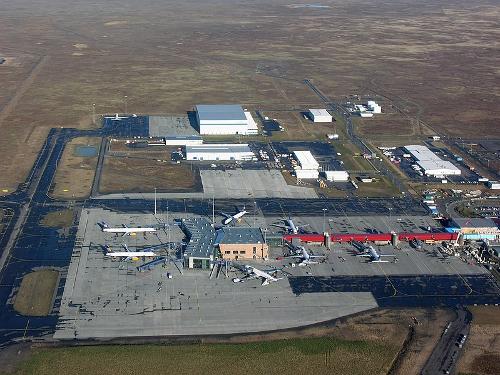 Keflavik Airport IcelandPhoto:Hansueli Krapf CC 3.0 Unported no changes made
Keflavik Airport IcelandPhoto:Hansueli Krapf CC 3.0 Unported no changes made
Short sea shipping is important for inland traffic, because all towns and villages are on the coast and have ice-free harbors. Shipping is also of great importance for freight connections with other countries. The main port is Reykjavík. There are two private international airlines: Icelandair and Eagle Air. There is an international airport at Reykjavík. There are also nearly a hundred small airports, important for domestic passenger traffic. The road network (12,500 km) is mainly located on the coast and due to the weather conditions only passable for a few months a year. There is no railway network.
Sources
Blijderveen, W. van / IJsland
Gottmer
Encarta Encyclopedie
Jansen, A. / Reishandboek IJsland
Elmar
CIA - World Factbook
BBC - Country Profiles
Copyright: Team The World of Info